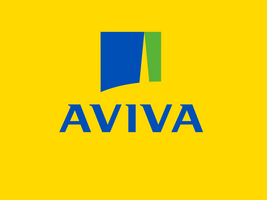Title Page
-
Conducted on
-
Prepared by
-
Location
-
To view our Loss Prevention Standard that supports this checklist, please view the following link : https://broker.aviva.co.uk/documents/view/aviva_balcony_and_terrace_safety_residential_buildings_lps.pdf
Balcony and Terrace Safety: Residential Buildings
Construction/Management of Hazards and Controls
-
1. Are all materials of construction for the building known and documented? Are any materials of construction combustible?<br>Is the location of any combustible materials of construction clearly identified on drawings and documentation?<br>
-
2. Are the balconies and terraces located adjacent to, above or below combustible building construction features highlighted in question 1 above?<br><br>Consider:<br>• Walls, external cladding and wall insulation<br>• Wall coverings, such as living walls<br>• Other building features, such as gutters, downpipes, facia boards, soffits and roof overhangs<br>• Combustible roofs and living roofs<br>
-
3. Are the balconies/terraces themselves constructed containing combustible materials?<br><br>Consider:<br>• Decking, frame, joists, cassettes, soffits, balustrades and handrails, etc.<br><br>If unknown, seek professional advice.<br>
-
4. Has a fire risk assessment been undertaken which takes into account all construction materials and includes the construction materials of the balconies and terraces?
-
5. Has the risk of external fire spread been assessed?<br><br> Consider:<br>• Direct vertical fire spread from balcony to balcony<br>• Vertical fire spread, aided by combustible wall elements, cladding or fascia's, etc.<br>• Horizontal fire spread on balconies/terraces, walls and on roof top terraces<br>
-
6. Do elements of balcony and terrace construction present an increased risk of property damage, and/or pose a risk to the health and safety of residents and other building users?
-
7. Have steps been taken to remove/replace any elements of construction considered to present an increased risk of property damage and/or to life safety?<br>Has this work actually been undertaken?<br>
-
8. Are there up to date:<br><br>• Fire risk assessment and<br>• Health & safety risk assessment(s)<br>Both of which that take into account the presence, location, construction, condition and use of balconies and terraces?<br>
-
9. Have any action points generated from all risk assessments completed been:<br><br>• Identified?<br>• Prioritised?<br>• Tracked?<br>• Completed?<br>
-
10. Do local rules and terms of leases exist that manage and present restrictions on the way residents can use balconies and terraces?
-
11. Do local rules/restrictions prohibit the following high fire risk activities on balconies and terraces:<br><br>• Barbeques?<br>• All forms of cooking?<br>• Heaters/chimineas?<br>• Firepits?<br>• Smoking?<br>• Candles and related items, e.g. oil lamps?<br><br>Note: Aviva recommends all these activities should be prohibited.
-
12. Are local rules and restrictions in usage of balconies and terraces being observed by residents and strictly enforced?<br>Is this via recorded inspections and patrols?<br>
-
13. Are regular formal documented inspections undertaken of balconies and terraces to check on the presence of:<br>Barbeques, firepits, chimineas, heaters, candles, lanterns, excessive storage/combustible furniture, combustible privacy screens, highly flammable substances (fuel/firelighters), dry vegetation (plants) and presence of combustible matter collecting beneath decking, etc?<br>
-
14. Are prohibited items and activities, e.g. barbeques, heaters, candles, fuel, etc. removed, and removal enforced/reinforced when identified?
-
15. Are all residents, including new residents, informed of balcony and terrace usage restrictions with regular reminders?<br>Is clearly evident signage used and in place?<br>
-
16. Are residents provided with the clear advice from the fire brigade to: "Never use a barbeque on a balcony"?<br><br>Is clearly evident signage used and in place?
-
17. Are residents provided with clear advice on safe balcony and terrace usage, including the risks of smoking and careless disposal of smoking materials?<br><br>Note: In most cases Aviva recommends smoking be prohibited on balconies.
-
18. Is there a 'means of notification' reporting procedure for any balcony and terrace misuse, so that residents can alert property managers?
-
19. Are regular formal documented inspections undertaken of balconies and terraces, to check on such things as:<br><br>• Condition of the base, frame, decking, soffits, balustrade & handrails, etc.?<br>• Damage, cracks, corrosion, fatigue and wear and tear?<br>• Suitability of construction materials for the environment?<br>• Potential for decking slips/trips and falls from height?<br>• Height and design of balustrades (1.10 metre minimum), with maximum spacing gap (100mm sphere)?<br>• Ease of climbing balustrades, etc.?<br>
-
20. Is the weight capacity of balconies known and recorded?<br><br>• Is this sufficient for the expected loading?<br>• If required is this exposure managed with residents?<br>
-
21. Are any decorative balconies present (such as those found on older properties with metal railings)?<br><br>Where present are these considered suitable or unsuitable for use? If required, is access restricted, managed and arranged with clearly visible signage prohibiting use?<br>
-
22. Are any items present that pose a risk of falling, such as plant pots, gym equipment, etc. that could cause injury and/or damage?<br><br>Is there guidance for these exposures?<br>Are these exposures managed?
Completion
-
Additional Comments
-
Completed by: (Name and Signature)
-
Please Note:
This document contains general information and guidance only and may be superseded and/or subject to amendment without further notice. Aviva has no liability to any third parties arising our of ARMS' communications whatsoever (including Loss Prevention Standards), and nor shall any third party rely on them. Other than liability which cannot be excluded by law, Aviva shall not be liable to any person for any indirect, special, consequential or other losses or damages of whatsoever kind arising out of access to, or use of, or reliance on anything contained in ARMS' communications. The document may not cover every risk, exposure or hazard that may arise and Aviva recommends that you obtain specific advice relevant to the circumstances.














